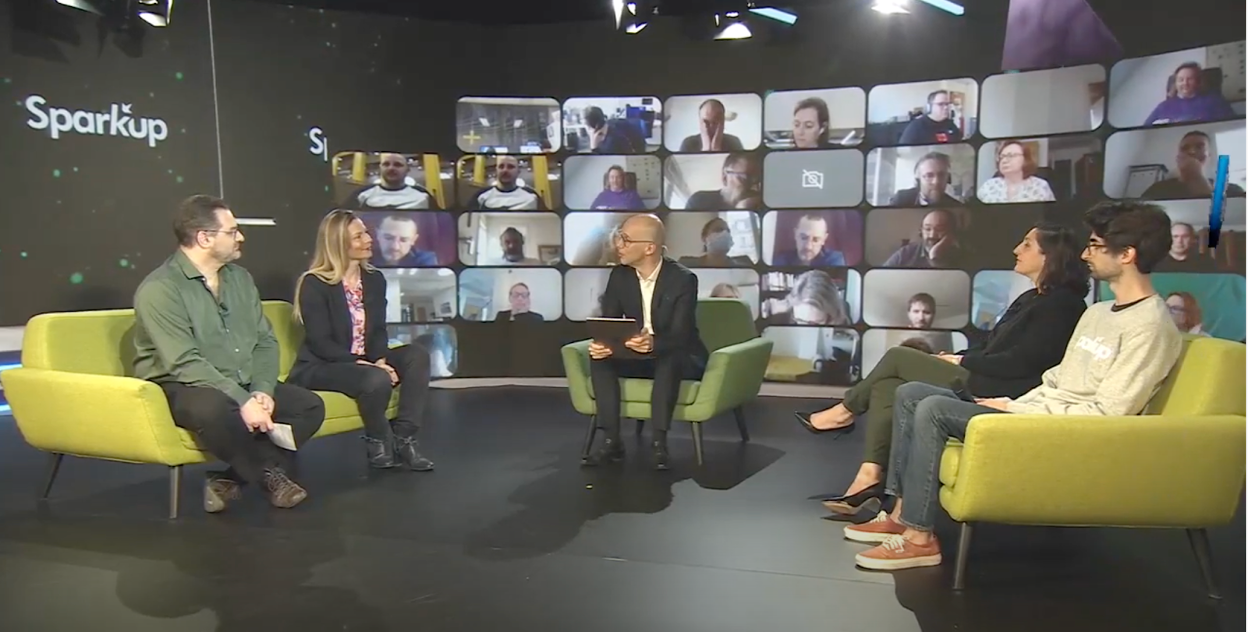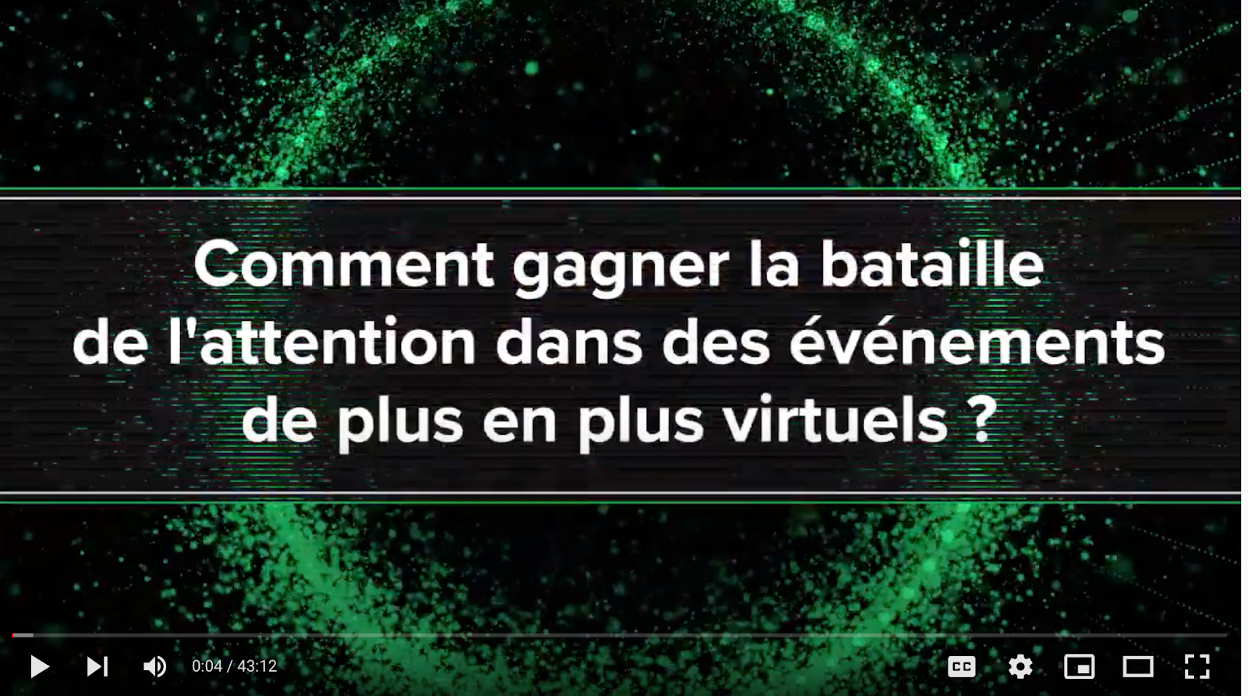How to keep virtual or hybrid events' participants captivated on their screen? It is a big challenge to overcome for event professionals.
Why is it so difficult to draw a virtual audience’s attention?
Attending a virtual event is not a natural thing for humans, who have an “embodied cognition”, explains Albert Moukjeber, Ph.D. in Neuroscience and clinical psychologist. “A big part of our attention is conditioned by the fact that we share a mutual and physical environment with the people we interact with. With virtual events, a big part of that attention is truncated.” To maintain the audience’s attention, tools can be used to make an event more sensorial, according to the specialist’s recommendations.
Digitalization makes it more difficult to catch a person’s non-verbal messages, semiologist Élodie Laye Mielczcareck says: the image being centered only on the participant’s face, it is impossible to see their body language; blushing and dilated pupils, for example, are more difficult to perceive… All of these signals, however, are just as important as verbal messages for our brains. “A video call is exhausting, because our brain fills the gaps between all the missing data and reproduces the information constantly”, she explains.

7 keys to maintain attention:
Régis Clinquart, creator, writer and script writer for hybrid and virtual events, shares his tips to “create retention”:
- A “100 % useful” content: avoid anything that could be considered a waste of time, such as repeated content or overviews: “These are opportunities for people to lose interest, and to tell themselves that ‘the real content hasn’t started yet’. They should be completely banned!”.
- Bring some changes. A hybrid or digital event can last for a few hours, and you might see your online participants leave their computers. By making small changes regularly, you keep their attention and reduce the feeling of “length”. To do so, the formats can vary (interviews, movies, slide shows, going from live to recorded content), as well as the setups (virtual mosaic - see virtual audience - rooms, etc.), the speakers… “the audience, who started to get bored, ultimately decides to stay”, Régis Clinquart explains.
- Encourage audience interaction between the stage and the audience, by doing polls, quizzes, surveys, or by using more advanced solutions offered by Sparkup.
- Entertainment: make sure to entertain the audience, with things such as humor sections or gamification. It helps maintain the attention. One example from Régis Clinquart is the virtual world of the Metaverse, where “the exploration of an immersive world gives us the impression to walk around, to live an adventure instead of listening to people while staying still on our chair.”
- Keep the FOMO in mind (=fear of missing out). Similar to teasing, the idea is to make sure that the audience is expecting something they don’t want to miss. We can announce a concert at the end of the event, a highly-anticipated speaker, a gift, or start a game urging people to stay online, either because they are waiting to know the winners’ names, or because they want to try their luck again.
- Have breaks, just like during in-person events “even if it might seem counterintuitive”, Régis Clinquart admits. Sometimes, a 10 or 20 minutes interruption is enough. And of course, we might be tempted to make breaks as short as possible as we are scared to lose a few people. According to Régis, “if we split up the event, planning 20 to 30-minute breaks allows people to know that they will have time to take care of their business: it is not guaranteed that they will come back, but at least, they will stay until the break” to answer their emails, make some coffee… And you will have their complete attention until then. Script your event and decide if you should add longer breaks according to the event duration, the following content, the time of the day, etc.
- Avoid too much chat moderation, “you can even shake it up a little” ! It is OK to let people speak up and be critical, as long as it’s under control. “It is obvious that the most successful Facebook posts are the ones with 12000+ comments”, where the conversation is lively, etc. According to Régis, “You shouldn’t be scared of parallel discussion in the chat.” If, at one point, the virtual participants aren’t captivated by the content anymore, a conversation on the chat can maintain their attention and keep them online.
It is also possible to maintain your online audience by using other strategies: being relevant and offering quality content, adding movement in hybrid and virtual events…
Find all of our professional tips, as well as the ones explained in this article in our webinar: Comment gagner la bataille de l'attention dans des événements de plus en plus virtuels ?







